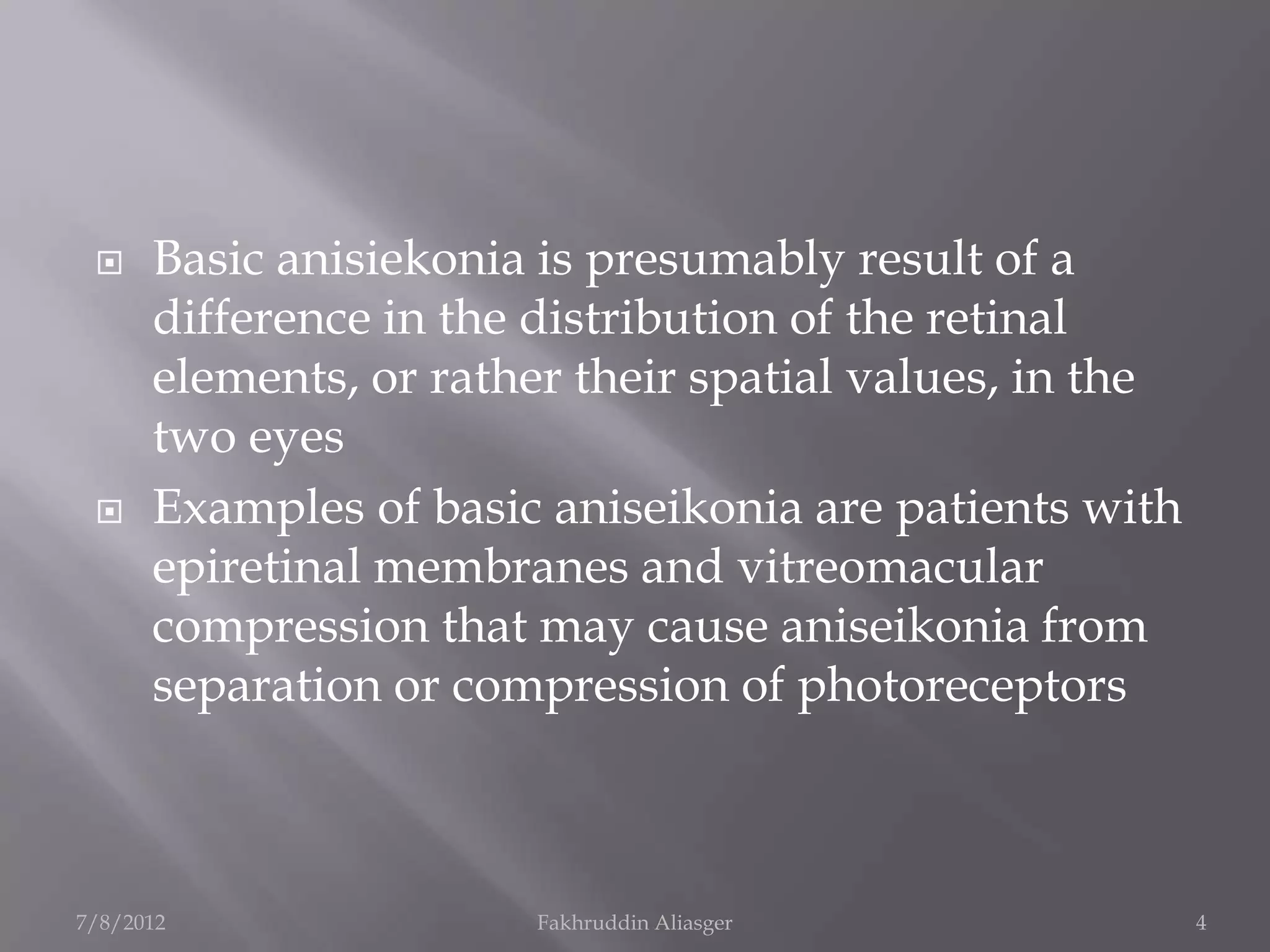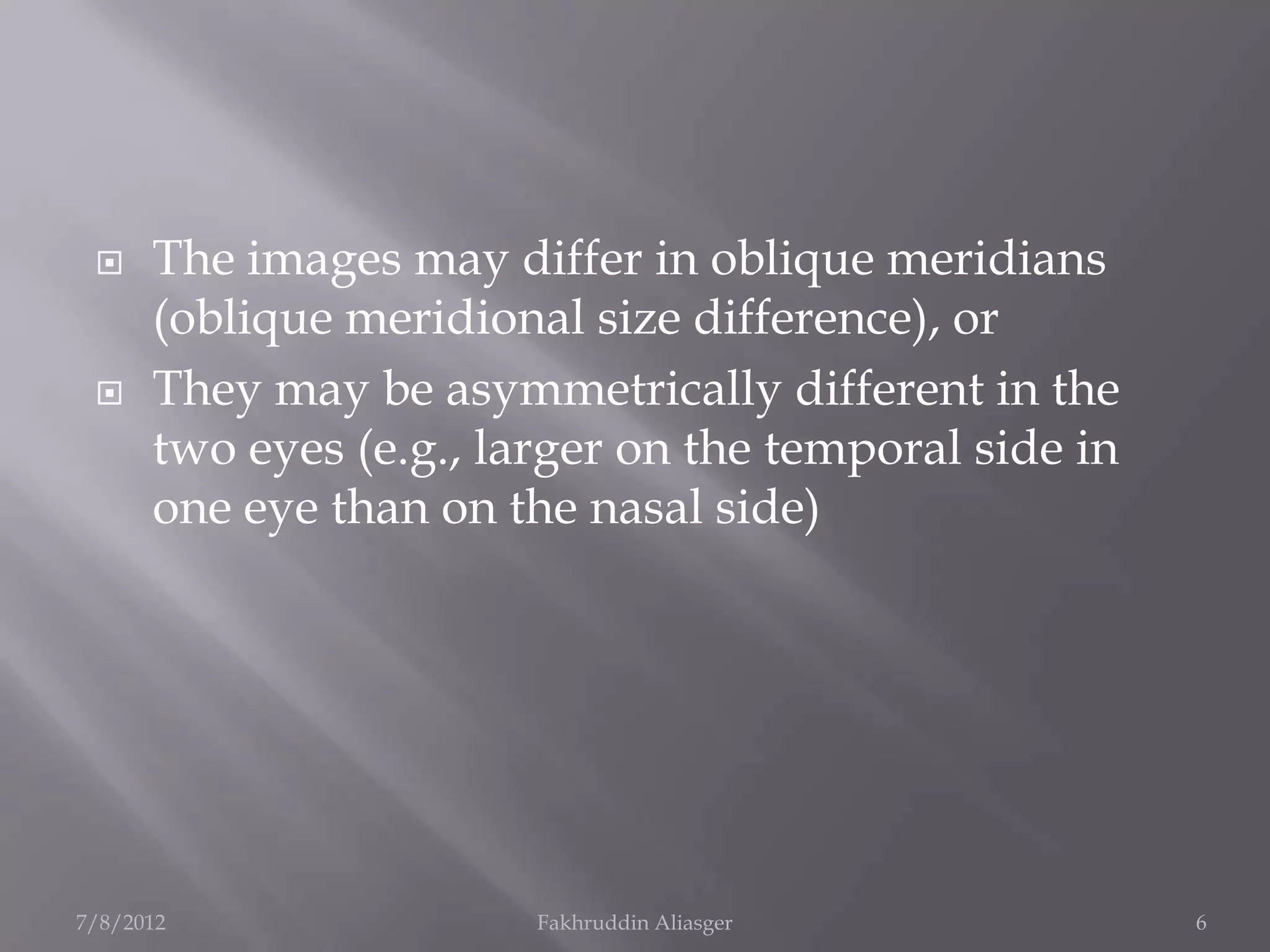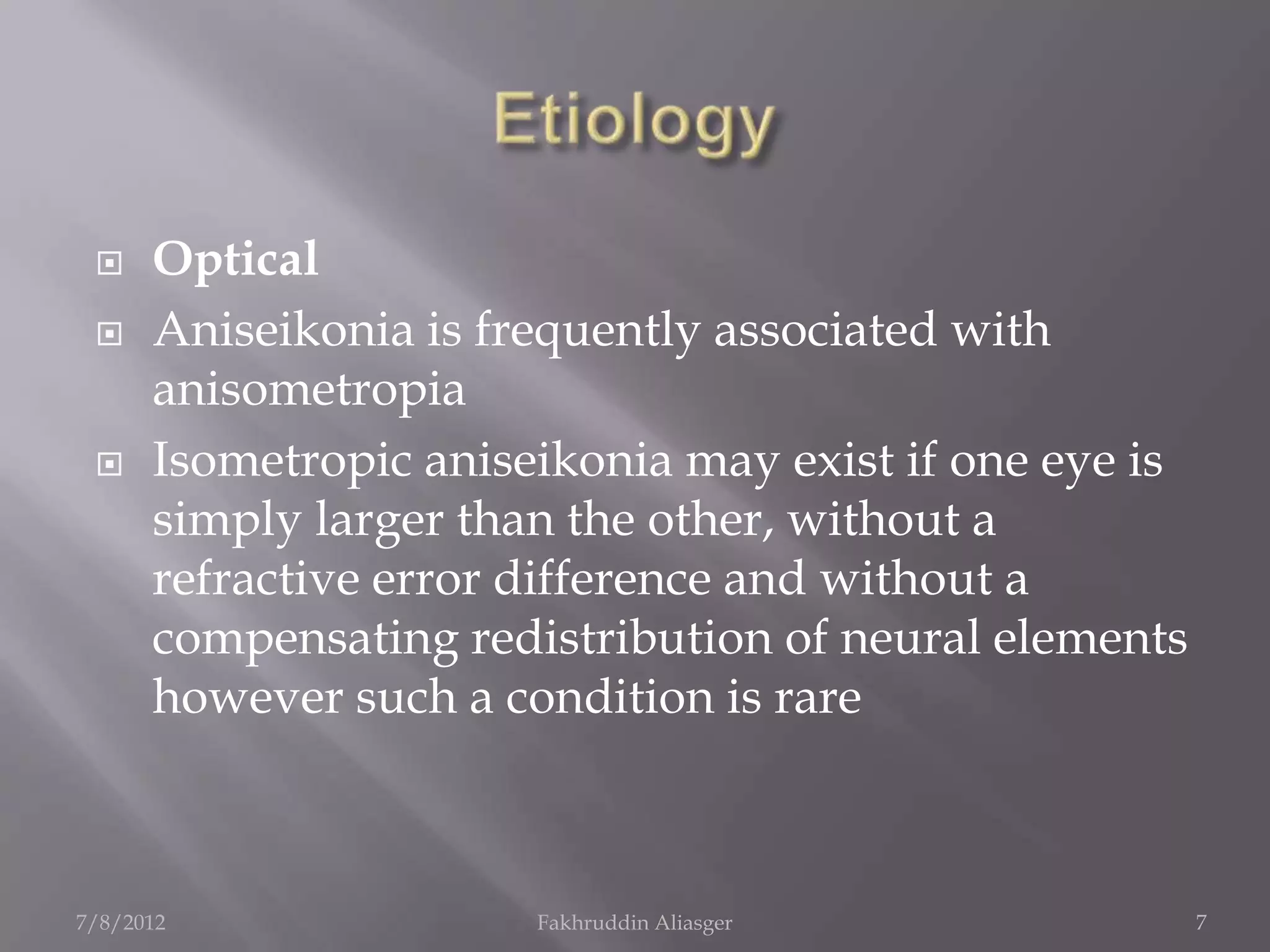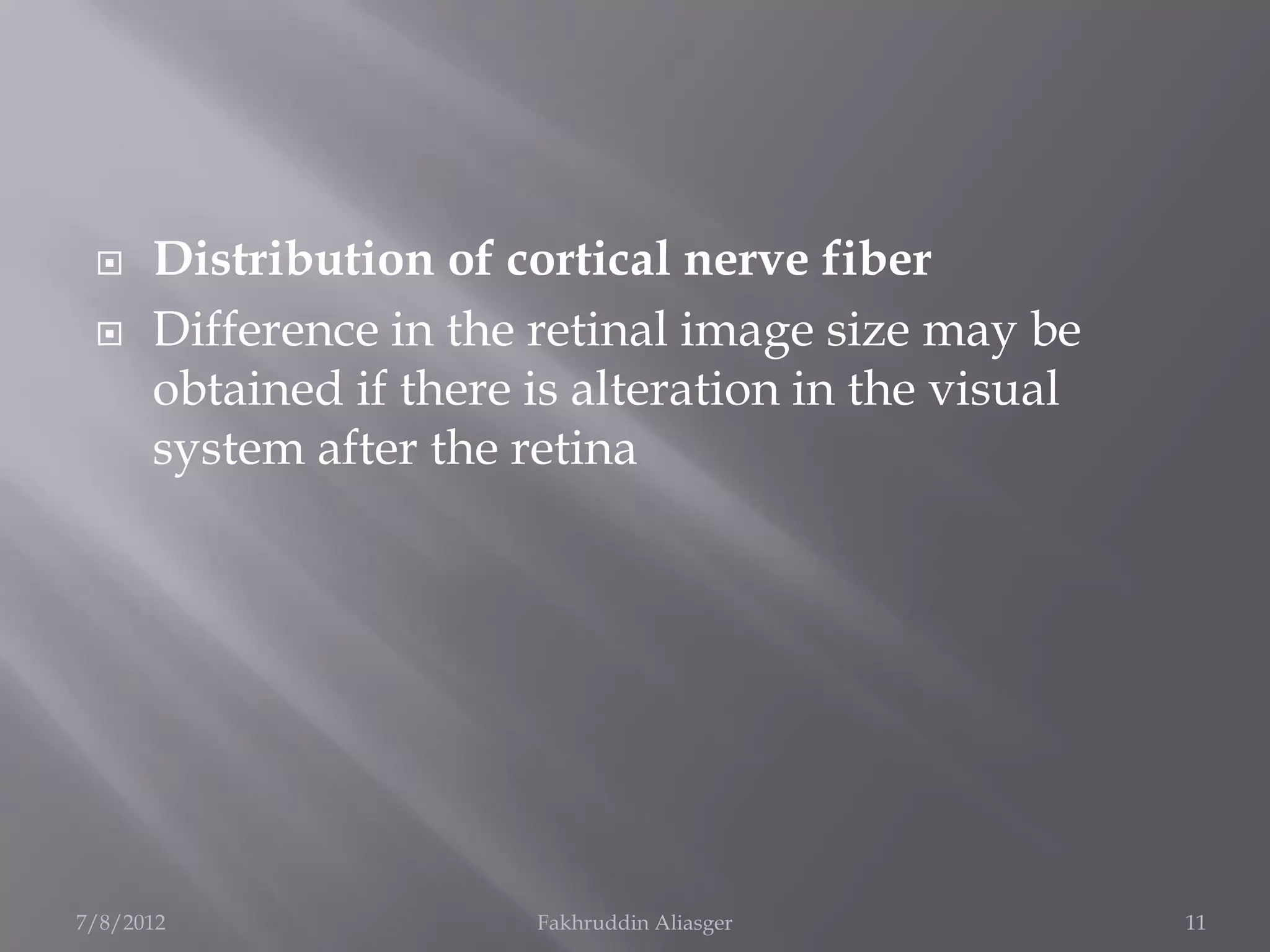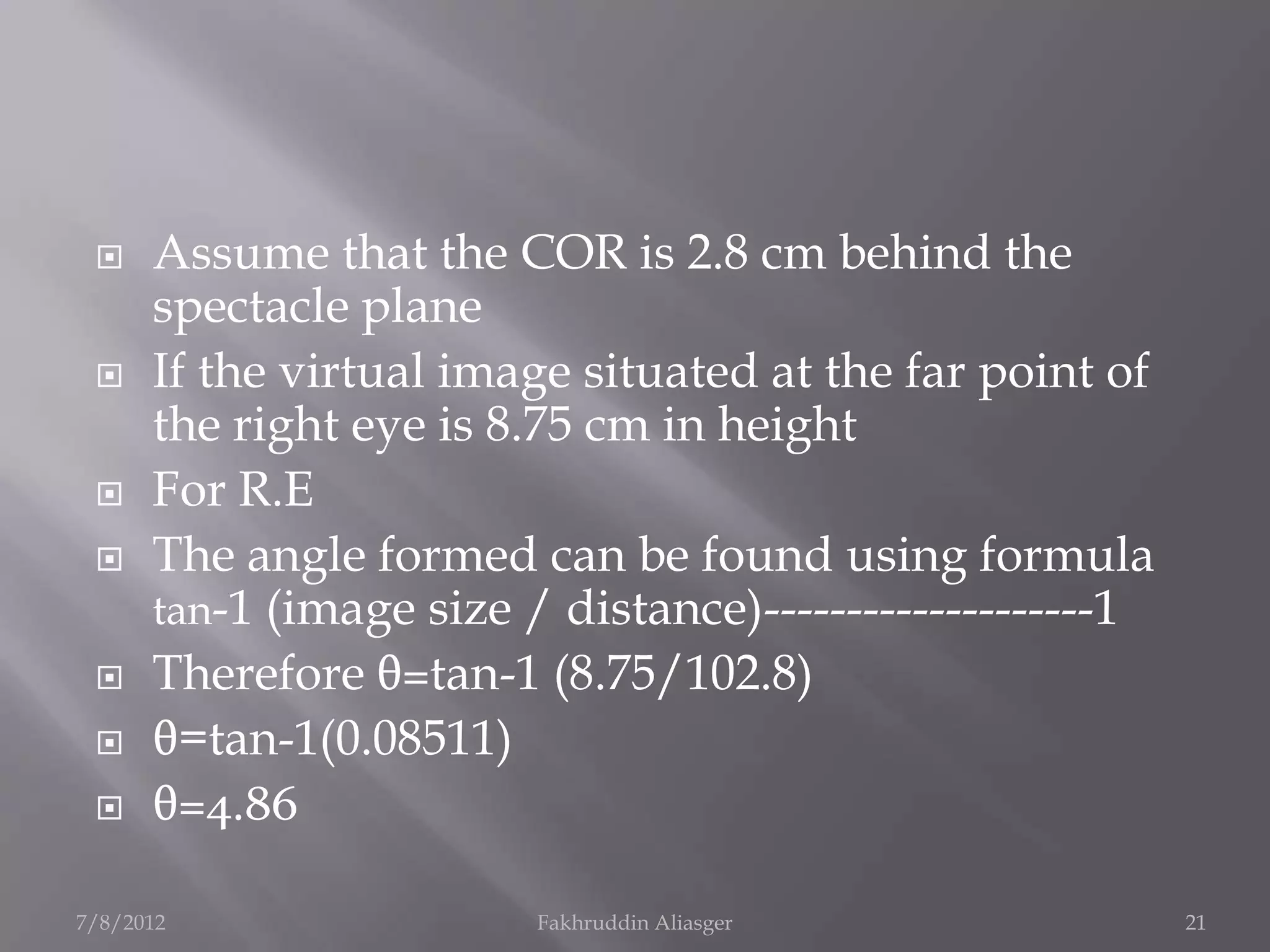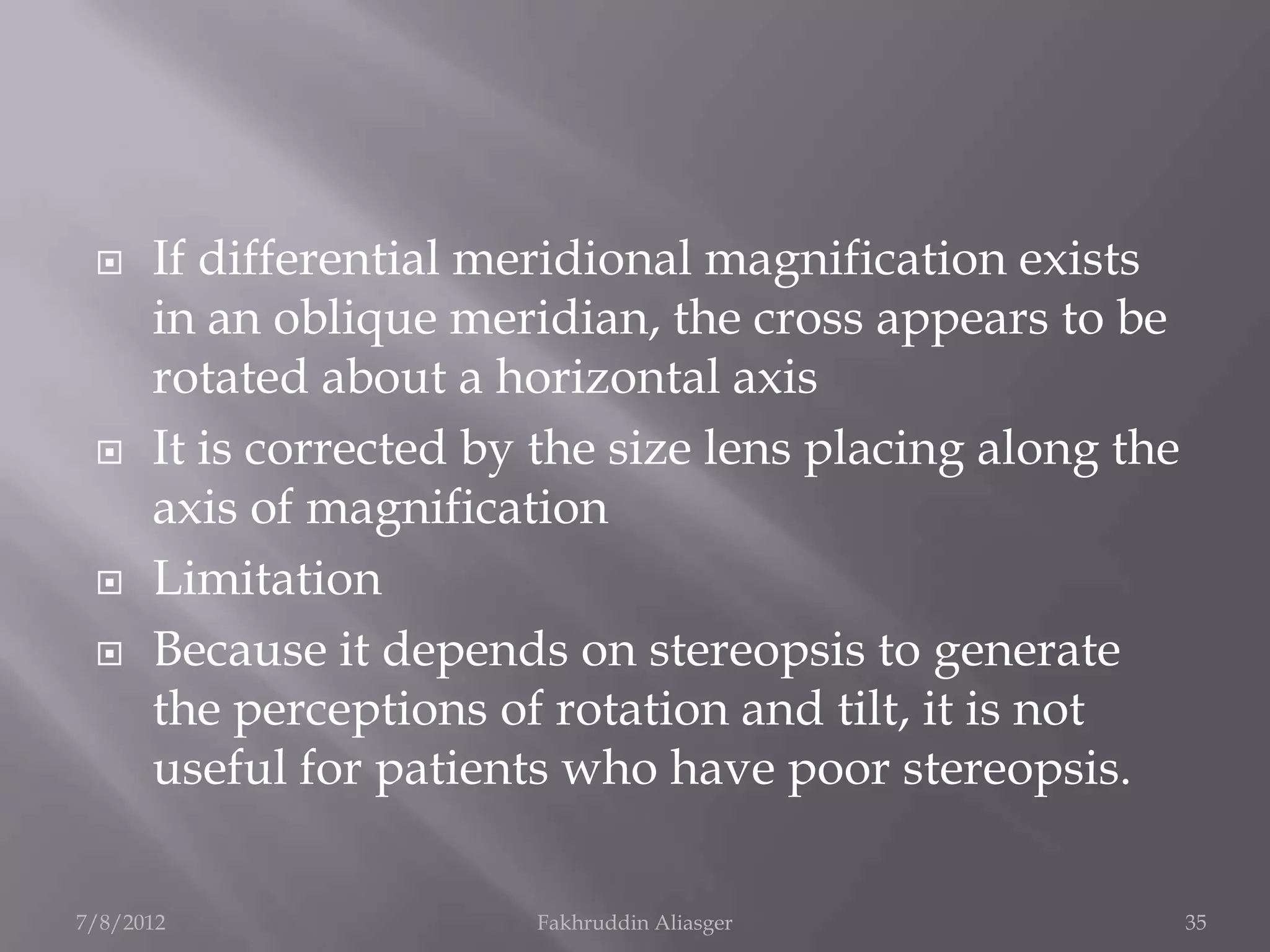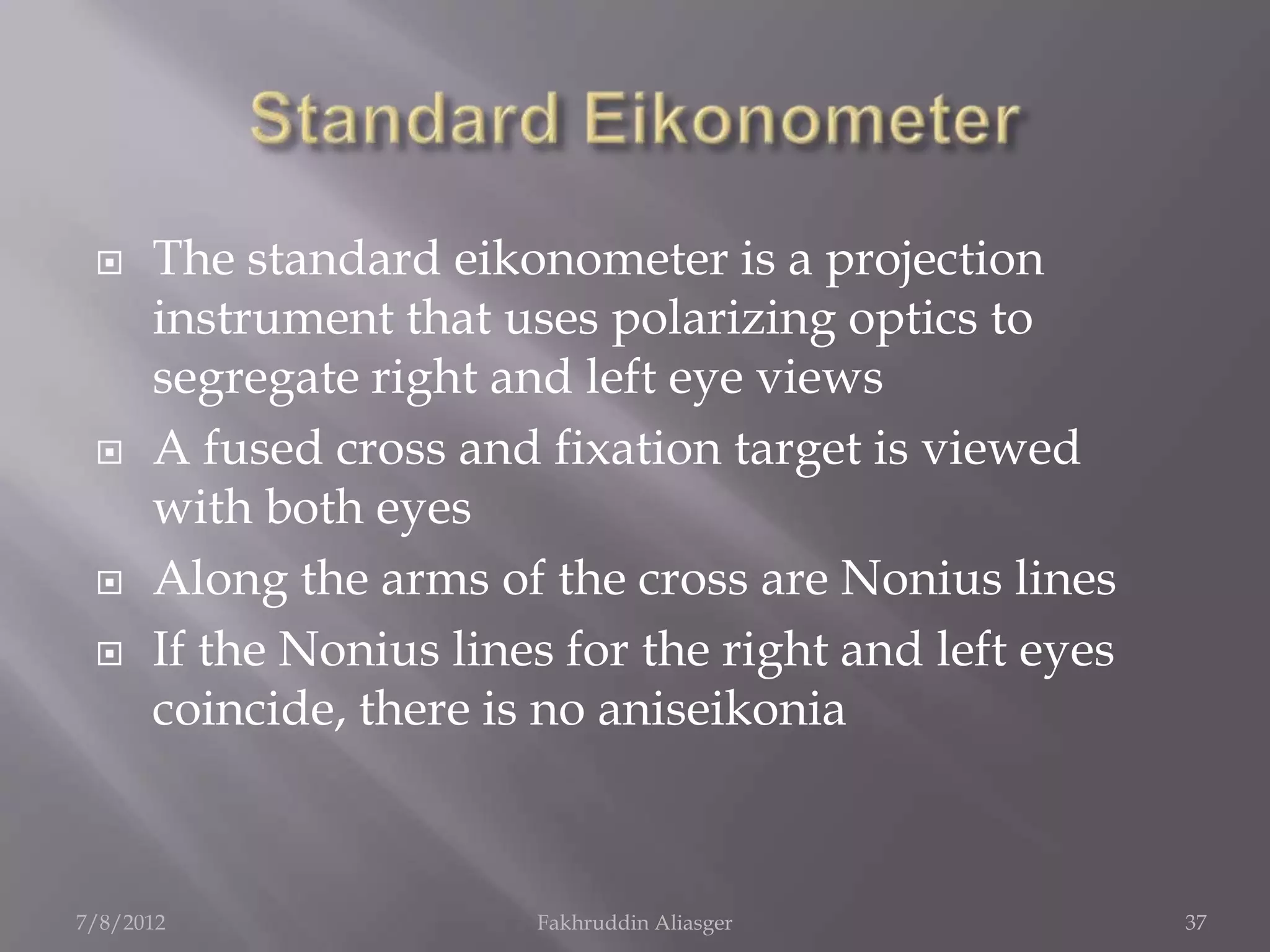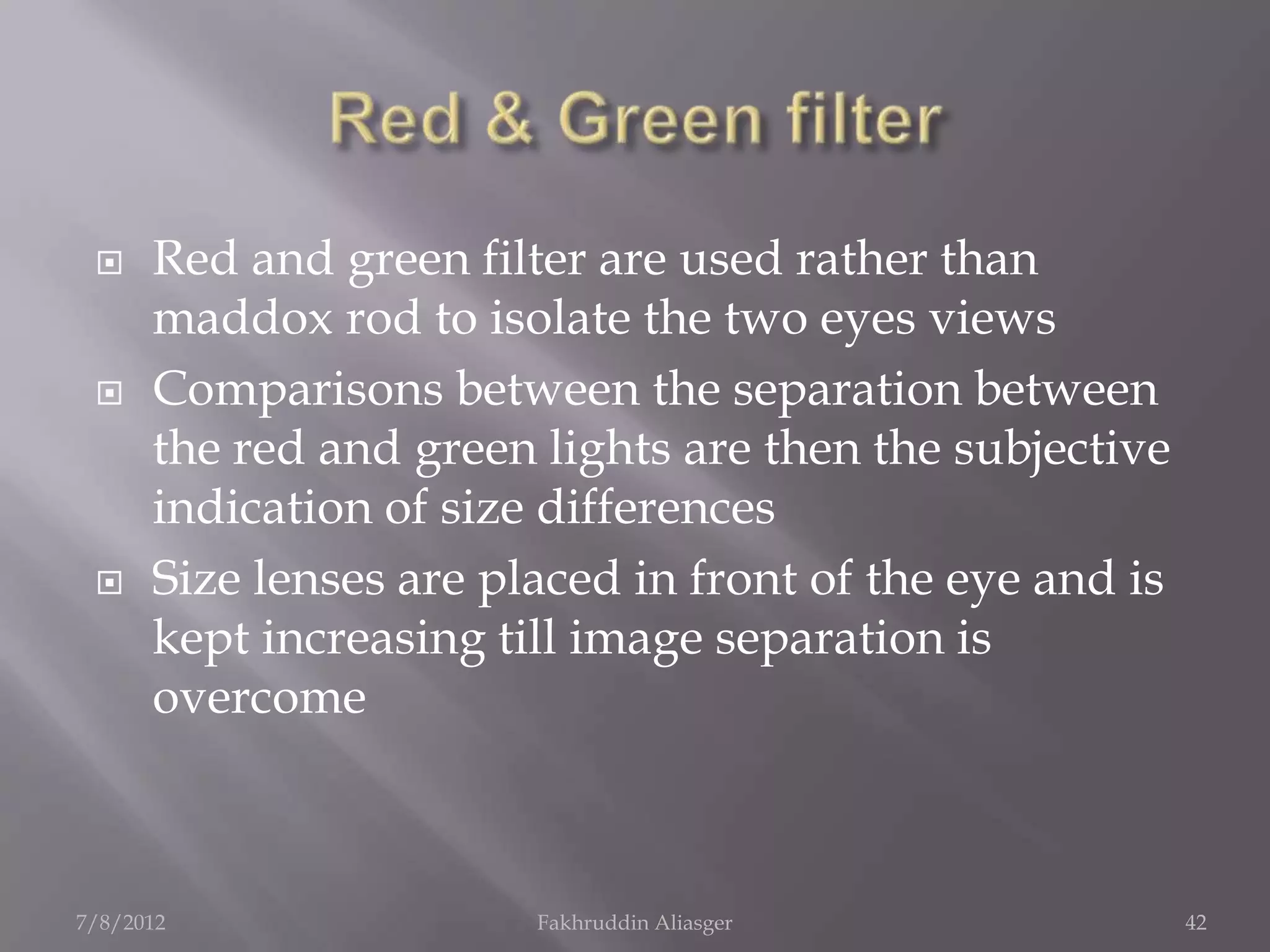Aniseikonia refers to an unequal apparent size of images seen by the two eyes. It can result from differences in refractive errors between the eyes (refractive aniseikonia) or differences in the distribution of retinal elements (basic aniseikonia). Symptoms include headaches, asthenopia, and difficulties with mobility or fusion. Aniseikonia is usually caused by anisometropia above 1.50-2.00 diopters and analyzing ocular components can help determine if it is due to refractive or axial differences.



